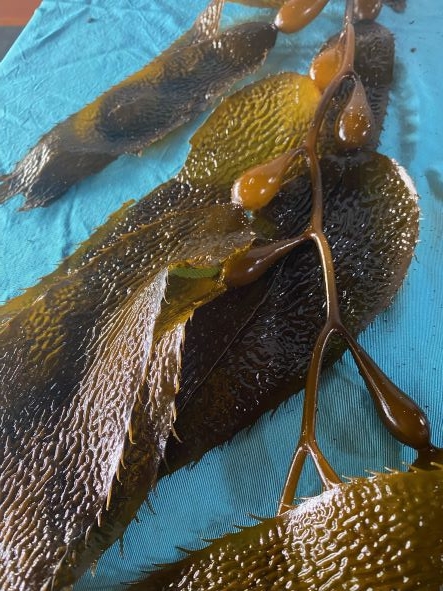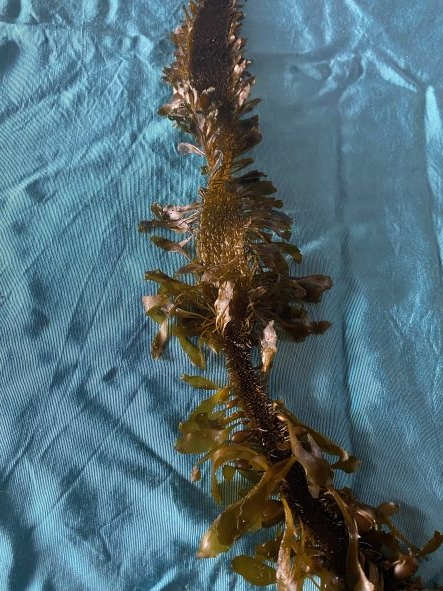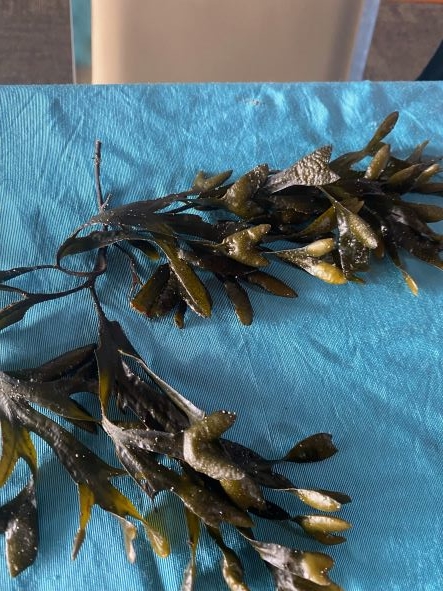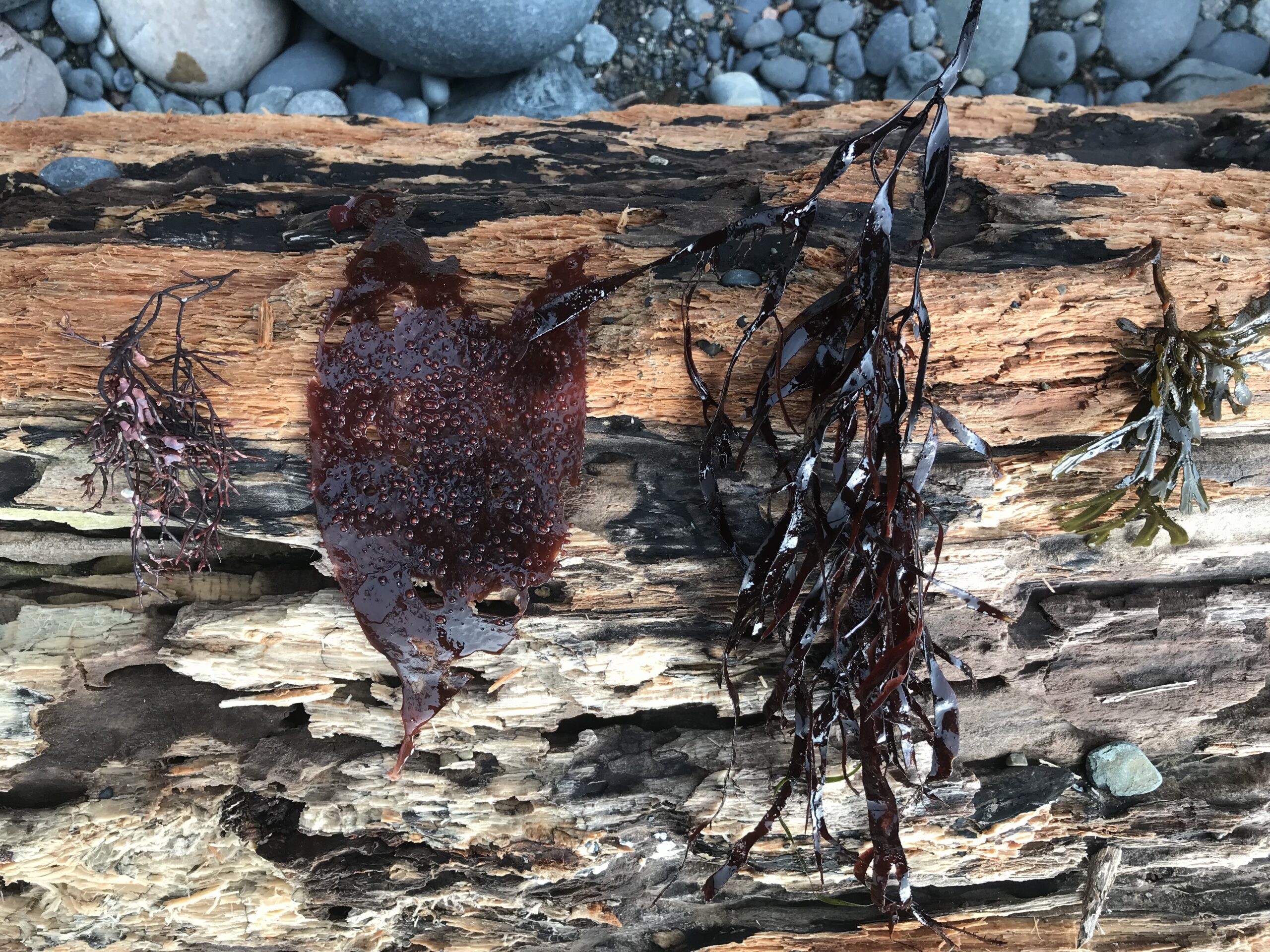Special Topics in Horticulture: Seaweed
Healing Powers of Seaweed
Student Blog Post by Emily Dionne & Bre Hafichuk
The Landscape Horticulture Certificate program students were very lucky to have Amanda Swinimer come to our school and talk about her lifelong, passionate journey with us on March 7th. Amanda shared her seaweed hand harvesting and wildcrafting experiences done throughout the development of her business, Dakini Tidal Wilds. With a background in Marine Biology, she educated us on the amazing properties seaweed has to offer. Amanda is a great source of inspiration and knowledge on this topic. We will highlight some of the information we learned about the harvesting and healing properties. These will include a few species found around Vancouver Island out of the known 650 species, as well as exploring their highly adaptive and resilient properties.
Amanda's presentation taught us that Seaweed plays a significant role in human and ocean health, being a local edible species, and a solution to global issues. Seaweed is a great purifier, nourisher and protector: it is estimated that 50-80% of global oxygen is produced by seaweed. Seaweed contains some of the most powerful antioxidants ever known which are: Fucoidan, Fucoxanthin, and Phlorotannins. Seaweed can absorb an estimated 1⁄3 of atmospheric carbon dioxide and regulate the climate through their critical cloud formation abilities. They can reduce methane produced by livestock (Asparagopsis taxiformis is particularly known for this), reduce ocean acidity and are also a source of biofuel. These environmental benefits make them a primary producer of the ocean ecosystem. They are also able to photosynthesize in nearly any condition.
There are 3 types of seaweeds that include many species, but we will touch on the main 5 species covered in class. The first species is brown seaweed which all kelp belongs to. Kelp forests are the most productive ecosystems on the planet providing habitat and food. They are currently experiencing a global rate of decline. One of the two species we are mentioning is Bull kelp. The edible sample provided in class tasted very salty, was light in texture and can be described as the “olive of the sea”. It is very high in vitamins and can grow 30m long in 6 months. Amanda shared some tips for harvesting Bull kelp: avoid harvesting blades with spore patches which are dark patches near the tip of the blade with thousands of spores in it. Find washed up Bull kelp in good condition to harvest, and the earlier you find them the better.
First photo: Giant kelp

Second photo: Winged kelp

The second species of brown seaweed we learned about is the Winged kelp. The sample we tried for this species was noticeably thicker in texture, and less salty compared to Bull kelp. We learned that the lateral fronds have sporophylls which is how they reproduce. Winged kelp is rich in vitamins, minerals, fibre, essential fatty acids, antioxidants and is also a good source of proteins. It aids with liver support, protects against chronic disease, and helps balance the female endocrine system. One harvesting tip for this species is to harvest in early spring and summer.
Third photo: Egregia menziesii (Boa kelp)

The next type we covered are the red seaweeds, which have traditional treatments for respiratory ailments (Carrageenan). The first species of red seaweed is Pacific Dulse. Properties of Dulse include: vitamins, minerals, essential fatty acids, protein, fibre, and are traditionally used to alleviate seasickness. It is also known to assist balancing adrenals and ease coughs. Harvesting tips include: annual low tide harvesting in spring and early to mid summer. Can be dried on screens or hung, traditionally dried on rocks and even pavement outside.
The second species is Black Nori, which is the most widely consumed seaweed in the world. It contains the highest protein content (can be up to 45%), is rich and the only known source of porphyran. Nori is a traditional food of several Coast Salish First Nations. It is high in a variety of vitamins, minerals, fibres, and essential fatty acids. Additional benefits include: being a tumour preventative, helping with thiamine deficiency (beriberi disease), improving circulation and can lower blood sugar. Harvesting tips: Annually harvest at high tide and rinsing carefully with sea water. It can be quite labour intensive.
Fourth photo: Fucus (Brown algae)

The final seaweed we learned about are the green seaweeds. Most green macroalgae live in freshwater and are high in many vitamins, minerals, and are a good source of protein, essential fatty acids and fibre. The first species we talked about is Sea Lettuce, which can be used topically to treat burns, internally to treat intestinal worms (vermifuge), anti-viral (influenza) and anti-inflammatory. Harvesting tips: harvest annually in all areas of intertidal zone. The flavours will change when it is reproducing. It dries fast and is 92 cells thick.
At the end of Amanda's presentation, she shared information about a Hawaiian ceremony that honours seaweed. Division/forgiveness seaweed & ceremony are known as Ho'oponopono in Hawaiian culture. The Hawaiian word for forgiveness, kala kala, is also the name of a Hawaiian seaweed. It is used as a purification tool in the Hawaiian forgiveness and reconciliation ceremony, Ho'oponopono. The prayer for this ceremony says: “I'm sorry, please forgive me, thank you, I love you”.
For more information and harvesting workshops provided by Amanda Swinimer please visit www.dakinitidalwilds.com.
Photo Credits:
Post Photos - Emily Dione and Bre Hafichuk
Banner Photo - Jessica Lokker

